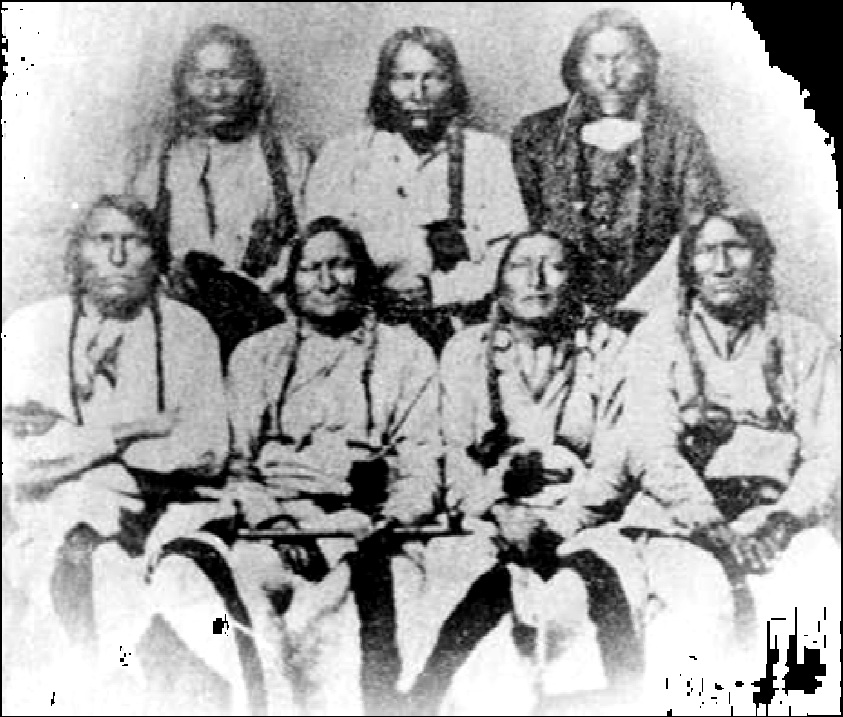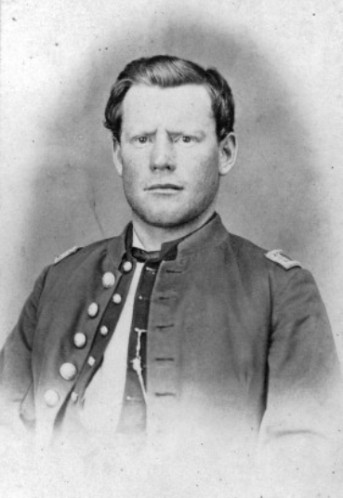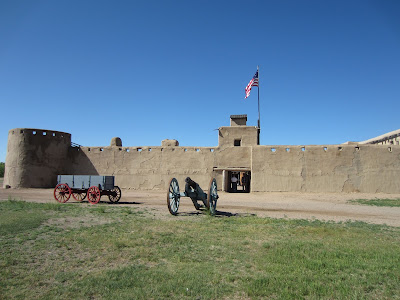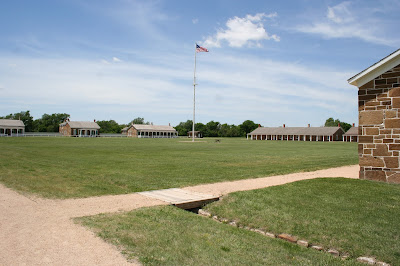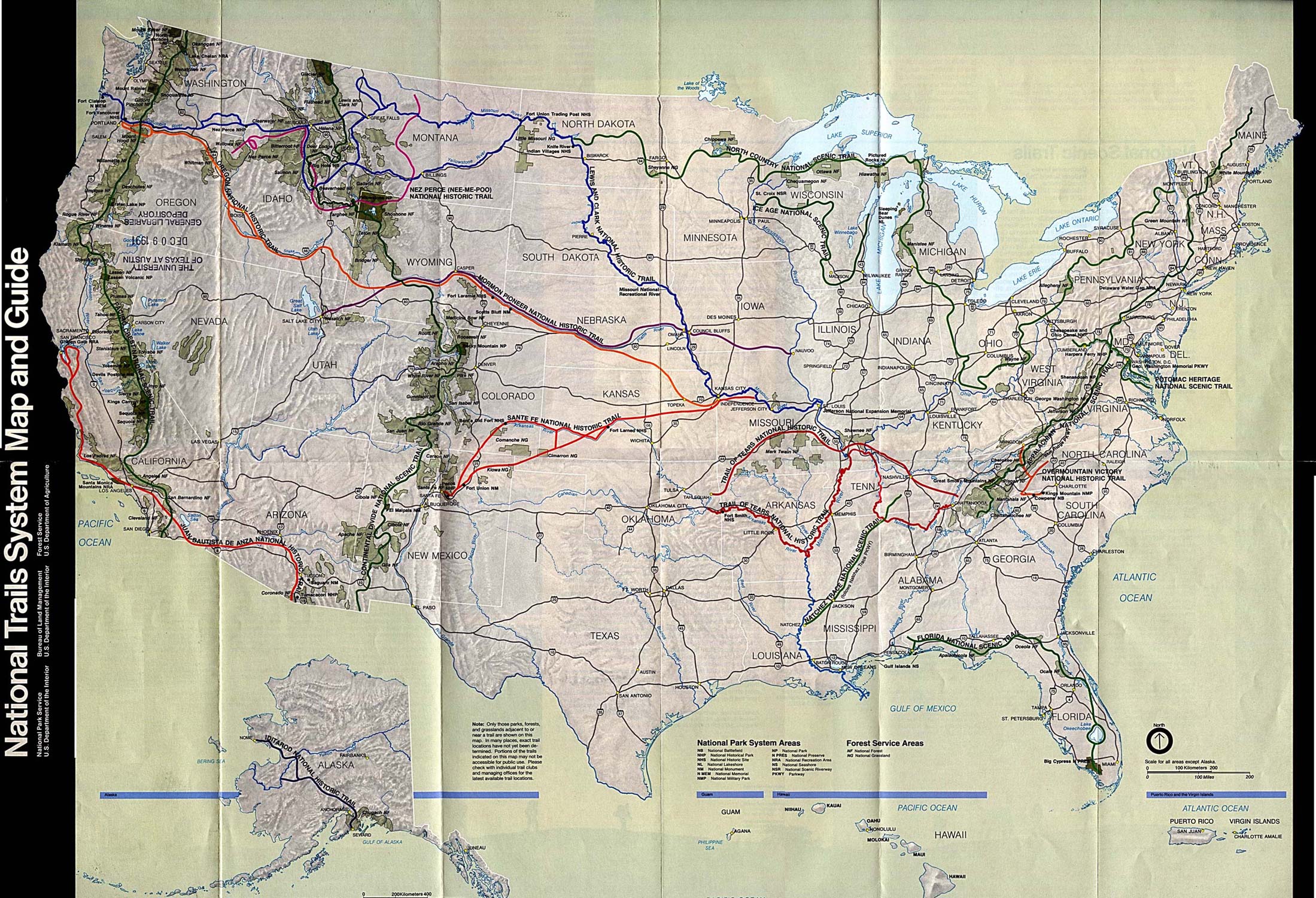Arches National Park, Moab, Utah
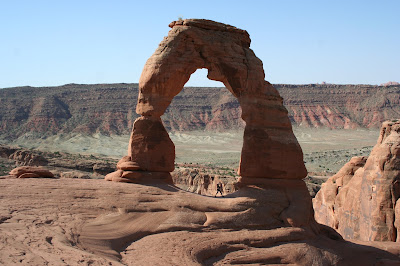 |
| Delicate Arch (Photo by Hunner) |
I usually write histories from documents, oral history
interviews, or archaeological works, you know human stuff. At Arches NP, history begins 300
million years ago. The geological history is etched in the landscape itself
where 2,000 arches exist within the park boundaries. Geological time manifests
itself at the Park.
Creating the Arches
Hundreds of millions years ago, this area lay under a vast
sea. Along the shores and under the waves, sand dunes existed which when buried, formed sandstone, petrified sand dunes. Oceans covered the area, then evaporated,
returned, evaporated, depositing thick layers of salt seventy five million
years ago. A mountain range one mile thick grew over the salt deposits. The
salt flowed under the earth and uplifted some of the land so that horizontal
sandstone flipped ninety degrees and became vertical ranges. Around sixty
million years ago, the Colorado River eroded the upper layers of that mountain
range and exposed the now vertical sandstone, which when eroded further, emerged
as the fins which eroded further to make the arches. Water and wind wore down the softer
stone to form dramatic landscapes, not just of arches, but also balanced rocks,
pinnacles, skyscrapers of red and tan structures. Water, time, and gravity made
the arches.
 |
| Sandstone fins where arches come from (Photo by Hunner) |
This is a dynamic process. Again from the exhibit: “What you
see now is the result of millions of years of gradual change. Some of the
changes have been dramatic. Mountains have come and gone. Oceans gave way to
deserts. The changes occurred slowly, have not stopped, and will continue as
erosional forces reshape the land.” The arches we see today might collapse
under its own weight, as the Wall Arch did in 2008. Like all living things,
arches die. In the words of the NPS, this is a “never ending story of
deposition, uplift, collapse, and erosion.”
Hiking the Arches
 |
| Hiking over slickrock to Delicate Arch (Photo by Hunner) |
 |
| The 100 yard span of the Landscape Arch (Photo by Hunner) |
 |
| The over and under Double O Arch (Photo by Hunner) |
Visitors from around the world converge on Arches National Park to wander in awe through this magical landscape. Although Driven by History focuses on human history, in my travels, I can’t pass up hitting some of the stunning parks of natural beauty that are jewels in the NPS crown.
Arches National Monument, designated by President Hoover in
April 1929 contained about 4500 acres. President Roosevelt expanded it to
34,000 acres, and then President Johnson doubled its side in 1968. Congress
voted it a National Park in 1971 with 76,000 acres.
Golden Spike National Historic Site
 |
| The replica of No. 119 making a run past the visitors' center at Golden Spike NHS. Engineer Tom Brown is waving from the cab. (Photo by Hunner) |
Next I drove to Golden Spike NHS near Corinne, Utah. In 1869, at this place, a vast continent-wide engineering
and construction effort connected the Pacific and Atlantic coasts and helped unite
the nation after the Civil War. Thousands of workers graded a path 1,800 miles across
prairies and mountains, laying wood ties and iron rails, and completing the
first transcontinental railroad line. As you enter the visitors’ center, these
words greet you: “Inscribed here, amid the sagebrush and bedrock of northern
Utah is a tale of grand dreams and brute work, greed and glory.” Brute force,
daring engineering, and federal financing muscled the railroad across the
continent.
The driving of the golden spike on May 10, 1869 culminated
almost four decades of industrial progress. The earliest railroads ran in
England in the first decades of the 19th century. Soon after the railroad came
to the United States, people started dreaming of a “Pacific Railroad.” Embracing
such public opinion, the U.S. House of Representatives in 1850 called for a
Pacific Railroad that would "cement the commercial, social, and political
relations of the East and the West," as well as providing a "highway
over which will pass the commerce of Europe and Asia." Railroads fueled
the industrial revolution in the 19th century.
While many voices advocated for a Pacific Railroad, some objected.
Primarily, they did not support the federal
government financing internal improvements; however for railroad companies to
build a route over hundreds of miles, government support proved essential. With
laissez-faire capitalism saying hands off to the government, some of the public did not want federal support of such a project. The transcontinental railroad changed this.
| Transcontinental Railroad Route (www.ducksters.com) |
Building the Pacific Railroad
In 1862, the U.S. Congress loaned $50 million to the Central
Pacific and the Union Pacific Railroad companies to start construction. The
Pacific Railway Act of 1864 loaned another $50 million to the railroad
companies. These subsidies lent the railroads $16,000 for each mile
constructed east of the Rockies and west of the Sierras, $32,000 for each mile
between the mountain ranges, and $48,000 for each mile in the mountains.
The 1864 act also granted that for every mile laid, railroad
companies received ten sections or ten square miles of land extending out from
the main lines. As historian Richard White calculated, the Union Pacific
received the square mileage of New Hampshire and New Jersey combined, while the
Central Pacific’s take equaled the land mass of Maryland. In total, railroads
around the country received 131,230,358 acres of land grants from the United
States.
Railroad construction on the Pacific route went full
throttle after the end of the Civil War. Often using military men as managers who had built
or repaired railroads during the war, both companies raced to lay more track
than the other to secure more government subsidies. The Central Pacific had the
tougher route. Almost immediately after leaving Sacramento, the route climbed
up the Sierra Nevada Mountains, and its progress was slowed as tunnels and
steep switchbacks slowed their efforts. The Central Pacific only reached the
top of the Sierras in July 1867 and a year later had descended the high
mountains to link up with its Nevada construction. Much of the material for the
Central Pacific had to come by sea around the tip of South America and then
from San Francisco or Oakland by train to the rail head. With labor scarce, the Central
Pacific hired 11,000 Chinese to grade the land, dynamite the cuts and tunnels,
construct the bridges and culverts, lay the track, and hammer home the rails. Without
the Chinese, the Central Pacific section of the Pacific Railroad would have
taken at least twice as long as four years.
The meeting of the Central Pacific and the Union Pacific Railroads at Promontory Summit
(Courtesy of http://up150.com/timeline/)
Here are some statistics from the visitors’ center exhibit: once the monumental feat of leveling a road bed by hand and draft animal was finished, it took 400 iron rails for a mile of track. A rail was secured to wooden ties by 24 spikes. Each spike took three blows to nail it in. Thus, each mile of track took 12,000 blows of a sledge hammer. Multiply this over 1,800 miles.
Another interesting part of the interpretation at Golden Spike
NHS is the replicas of the two famous locomotives which met here in 1869. The Central
Pacific’s Jupiter and the Union
Pacific’s No. 119 operate in the
summer and make short runs along the track outside of the center. The sounds of
the whistle, the clacks of the wheels on the rails, the smell of the coal
smoke, and the chuffing of the moving steam locomotive is a glorious experience.
 |
| Golden Spike's Chief of Interpretation Justin Glasgow talking to the Mountain Valley Elementary School in front of No. 119 (Photo by Hunner) |
Transforming the Nation
The transcontinentals transformed the role of the federal
government in using public monies to support works for private gain. They
also changed the way we experienced time and space. Prior to trains, people often
measured time by how far one could travel in a day. Now distances that had
taken months to traverse were covered in days.
Railroads also redefined space as they privileged what lands
were important. Many established towns bypassed by the railroad withered while
nearby newly created towns blessed by a station thrived. Finally, lands distant
from markets now were connected to regional and even national and international
businesses and customers. The railroads enabled farmers, miners, lumbermen, and
other producers to send their goods across vast distances to markets.
As Justin Glasgow, Chief of Interpretation at Golden Spike
mentioned, this spot transformed the U.S. from a regional economy into a world
power. Justin also added that railroads ignited the protest movements at the
end of the 19th century. In reaction to the monopolies and high
transportation costs of the railroads, discontent farmers organized the
Populist Reform movement which eventually led to Progressivism at the beginning
of the 20th century. Justin concluded that railroad culture and
language are still with us. For example, the national time zones we use today came
about in 1883 to facilitate the railroads’ moving goods and people quickly
across our vast lands.
The Golden Spike NHS preserves the monumental effort of a
nation reeling from the Civil War to reinvent itself as a united country again. Tying
together the Atlantic and the Pacific coasts and the lands in between, putting
its industrial might to work, and building what many considered impossible, the
transcontinental railroad that joined at Promontory Summit in 1869 transformed
the United States perhaps as much as the Civil War. The Golden Spike NHS was
created in 1965.
Visitors can auto tour and hike some of the old cuts leading up to Promontory Summit. While hiking out to the Big Fill several miles east of the headquarters, I encountered a rattlesnake near the sign below. we both quickly went our own ways.
 |
| Roadbed to UP's Big Trestle over Spring Creek Ravine. Central Pacific's Big FIll of the ravine off to the left. Sign on right is where I spooked the rattlesnake. (Photo by Hunner) |



